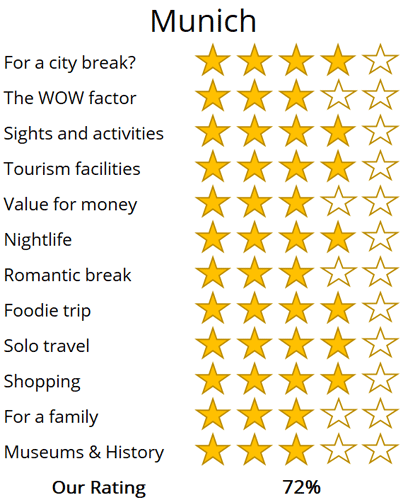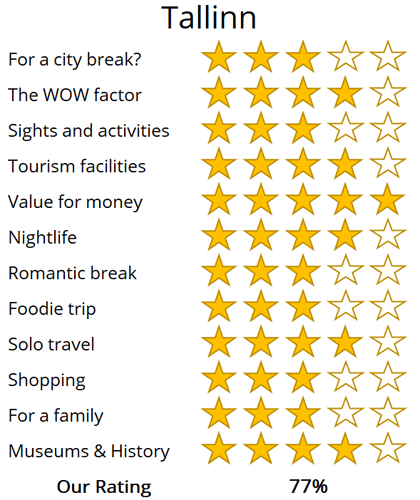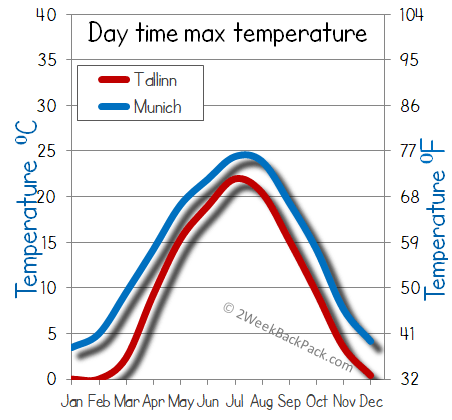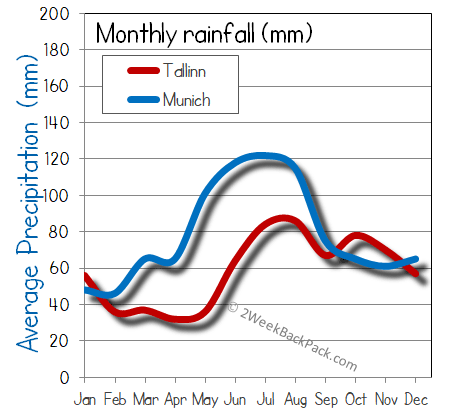WhereToGoForMyHoliday.com
The best destination comparison site!
WhereToGoForMyHoliday.com
The best destination comparison site!
Munich or Tallinn a vs city comparison and travel guide
Munich and Tallinn both offer unique and enticing experiences, but which one should you choose for your city break or holiday?
We understand your dilemma. There is an abundance of travel guides for both cities, but few actually comparing them, and advising you which is the better for your trip.
This article will provide our unbiased and independent views of Tallinn and Munich, hopefully making your choice that little easier.
The article is structured into several sections, each of which can be directly accessed through the following links:
• Introduction to the cities
• Scores and ratings
• Which one should I, friends, or family visit?
• When to visit and weather
• Who is the city suited for?
• The perfect 48hours (with map)
• Tourism details (where to stay? airport details?)
Introduction to Munich and Tallinn
Beer-mad and shrouded by the mountains, Munich is the boisterous capital of Bavaria. It's in the deep southern reaches of the country, where lederhosen are the threads of choice and white sausage is served at breakfast. Proudly unique, romantic, and steeped in art and culture, you won't find anywhere else like this in Germany.
Of course, it's the legendary Oktoberfest that puts Munich on the map. One of the world's biggest festivals, it draws millions to the city in late September (yes, Oktoberfest is confusingly held in September) to glug huge beers and eat endless wurst.
Trips at any other time of the year are sure to be a little more refined. They can involve long walks under Baroque churches, picnics in the English Garden park, and even daytrips to the stunning Bavarian Alps.

Munich is a vibrant city, ideal for a short trip
You could be forgiven for thinking you'd been plucked from the 21st century and dropped back in the 1300s when you step foot in Old Town Tallinn. Cobblestone lanes braid their way through stooped taverns with drooping roofs, chimney stacks, and grey stone keeps that echo The Lord of the Rings.
Aged Toompea Hill is the anchor of it all, erupting above the capital with its muscular castles and onion-domed churches. Below, the Lower Town buzzes with energy, pitting beer bars next to Baltic eateries and church steeples.
Tallinn has also established itself as one of Europe's most cutting-edge cities in recent years. It's a digital powerhouse with start-ups and creative agencies galore. They fuel areas like Kalamaja, which is all roaster coffee joints in Soviet tenements and funky bars in rundown prisons that spill into the Baltic Sea, proving it's not all about the history in these parts…
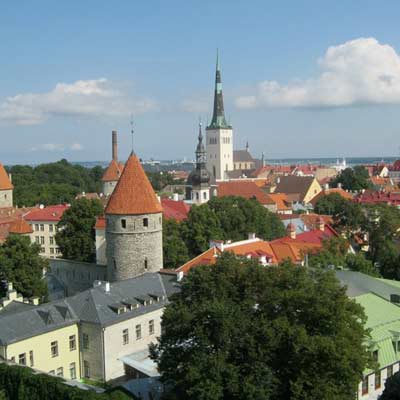
Medieval towers dominate the skyline of central Tallin
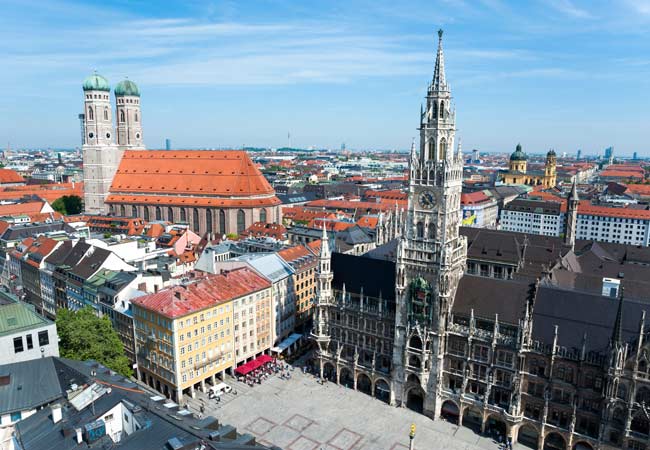
The Marienplatz and the historic centre of Munich, with the Frauenkirche Cathedral, and Neues Rathaus
Munich vs Tallinn: City Ratings
Summary
Where would I journey for a personal escape?
Tallinn
Where would I send my parents for a memorable visit?
Tallinn
Where's the ideal destination for my adventurous 19-year-old cousin?
Tallinn
Where should my food-obsessed friend indulge their culinary passions?
Munich
Note: The above comparisons are weather-independent and are based on travel during the most opportune times of the year. Details about the ideal travel seasons are elaborated upon later in this article.
In the sections that follow, you'll find a comprehensive comparison between these two fascinating cities. This includes recommendations on the duration of stay, the best times to visit, and tailored 48-hour itineraries for each city.
The final segment delves into practicalities for your travels, such as the best airport to fly into, the optimal districts for your accommodation, and insider tips, for when you come to explore the city.
We hope that you find all of this information useful, in planning your next exciting trip!
Destination details
How long to spend each city?
Tallinn might not be the biggest European capital, but it's a place that always seems to have another secret up its sleeve. Yes, two days might be enough to see the old city walls, wander Toompea Hill and sample the delights of the Estonian kitchen, but there's certainly enough to fill trips of four, five or even more nights.
Have a think about what you're after from your travels and then decide. If you're eager to squeeze in a few nights on the town (a good shout, as Tallinn is downright hedonistic), daytrips to the wonderful forests and coast swamps of Lahemaa, and a couple of the museums, you'll probably want to give yourself some extra time.
Take a couple of days minimum to get a feel for the alternative vibes of Munich. You'll need at least a morning or two to check off the grand churches and plazas of the downtown. Afternoons are often lost to a haze of currywurst and spätzle. The evenings will disappear to clinking tankards and too much Bavarian beer.
If you're planning on joining the Oktoberfest party, then the normal amount of time to spend in the Munich event is two days. Some people will stick around longer but remember that accommodation can cost a bomb during festival dates and you'll need to book well in advance.
The closeness of the Alps and the wide variety of off-the-beaten-path neighborhoods in Munich mean that it's also possible to stay here for much longer than just a weekend or a couple of days. You could do weeks of hiking in the spring and summer months. Alternatively, you could do a full ski holiday in nearby Garmisch-Partenkirchen (Germany's biggest resort) during the winter.
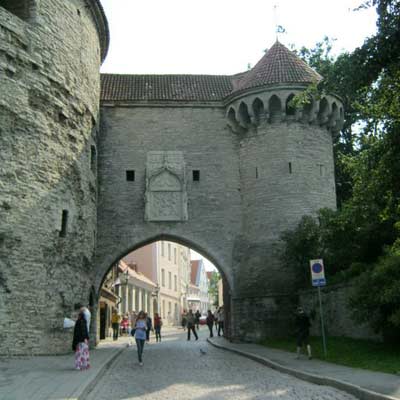
The Suur Rannavärav (Great Coastal Gate) protected Tallinn from seaward invasion

Excessive amounts of beer, lederhosen, singing and crazy fairground rides… it can only be Oktoberfest
Munich is one of those cities that has something going for it no matter the time of the year. Lots of people like the height of the summer, for the regular sun and temperatures that often spike above 30 degrees in the middle of the day. That's certainly perfect for wandering the town and enjoying the big lawns and paths of English Garden.
The autumn is best known for Oktoberfest. The shindig and the beer drinking begin in mid-September, lasting until the first couple of days in October. It's usually still warm for the party, but the days get shorter and jumpers will be needed as you get closer to November.
There's often snow in Munich from December onwards. This is the time of year to come if you have your sights set on the ski fields of the German Alps. The slopes of Garmisch-Partenkirchen typically open for business before Christmas, which is also when the enchanting markets start selling gingerbread and sausages on Munich's medieval squares.
Spring is also lovely. May is among the best months of all to travel. The summer crowds haven't arrived yet, the snows have melted, and thermometers can read a pleasant 20 degrees during the day.
The summer is considered to be the finest time in the Tallinn. From around May onwards, the temperature picks up to the high teens and early 20s, there's more sun, and the days are longer. From June onwards, the travellers and the crowds come, lending a buzz to the bars of the Lower Town.
There's no question that Tallinn looks downright gorgeous under plumes of snow in the midwinter. Some say it's the most enchanting time of all, as the nights draw in and there's ice glinting like diamonds on the roofs of the old churches. On the main Town Hall Square, you'll also be able to enjoy the delights of the Tallinn Christmas Market from early December onwards – think handmade Estonian decorations, hot wine, and traditional pastries. Don't expect to be warm, though. The Baltic gets sub-zero and bitter winds all throughout the season.
If you're keen to go a little off the beaten path and discover somewhere laced with rich history and culture, Tallinn is beckoning. With more and more low-cost flights now serving the local airport, a trip to this north-eastern corner of the continent isn't the chore it once was.
So, anyone eager to ditch the mainstay cities of Western Europe is in luck. Adding to that is an Old Town that's been called the best-preserved medieval quarter in the world, so there's loads for fans of original architecture and atmospheric neighborhoods.
Being so far north means there's nothing like the warmth of the Med or southern Europe up in these reaches of the Baltic. Yes, the summer months can get hot and the sea is only a stone's throw from the city, but Tallinn is hardly a beach destination.
Also remember that this is a small capital by global standards. It's certainly not the pick for anyone on the hunt for a colossal, electrifying metropolis.
Munich is unique in that it manages to fuse together the great outdoors, rich European culture, and an enticing foodie scene. That's all thanks to its place as the historic capital of Bavaria, which brings a long tradition of cooking, beer making, castle building – the list goes on.
The upshot? There are all sorts of travellers who are catered to, no matter if you come in search of pretzel eating or high-altitude trekking.
One thing you won't find in this city is the sea. The nearest saltwater is a hefty drive over the Alps in Italy or Croatia. So, don't come if you're pining to top up the tan and swim in the Med.

The Englischer Garten (English Garden) is the spawning park in the centre of the Munich
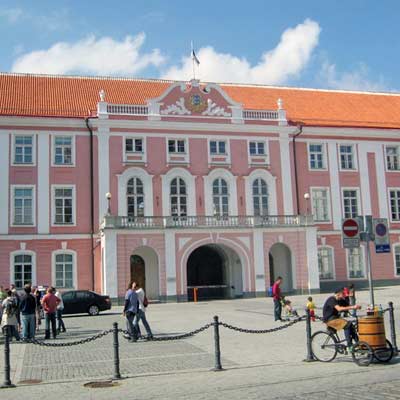
The Baroque wing of the Toompea Castle, is also the parliament building for Estonia
48hours in Tallinn
Wander the Lower Town, see Russian-style cathedrals, taste medieval broths in immersive eateries, gaze at the frothing Baltic waves, duck under ancient fortification walls – all that and more should be a part of any two-day itinerary for the Estonian capital…
Day 1: The Town Hall Square (Raekoja plats) at the very core of the city is always the perfect place to begin. Go there and the sightseeing will start immediately. The eponymous Town Hall itself is the main attraction. It's a beautiful 36-meter structure with a tower that's topped with the Old Thomas weathervane, now a symbol of the city. You're also at the perfect starting point to get lost in the Lower Town of Tallinn.
That's the largest part of the historic center, a UNESCO site, and the place where merchants and guilds would once have plied their trade. Viru Street is one not to miss within. It's a hubbub of shops and eateries, all leading to the handsome Viru Gate, which dates all the way back to the 14th century. A whisker to the north is the Hellemann Tower, offering travellers access to a high lookout point and a 200-metre stretch of the City Walls.
Once you're back on dry ground, delve into the Lower Town once again, going north via Pikk Street. At its end you'll emerge into the hipster area of Kalamaja. Boho coffee shops and Mexican eateries combine there, but the best way to spend the evening is in the block behind Tallinn's train station, where industrial-chic cocktail bars like St. Vitus mix up creative long drinks.
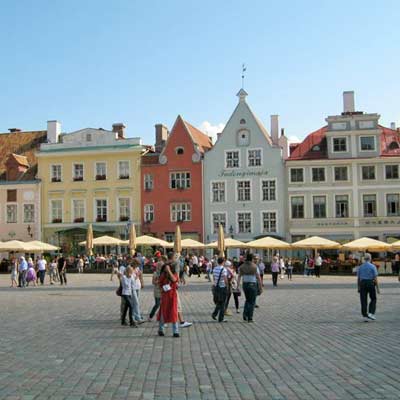
The Raekoja plats plaza is at the heart of Tallinn
Day 2: The early hours see you head above the Lower Town to Toompea Hill. Once the main keep and most fortified part of the historic city, it's still one of the most important postcodes in Estonia. On one side is the soaring Alexander Nevsky Cathedral, sporting onion domes and filigrees that evoke the Russian Empire.
On the other is St Mary's Cathedral, the oldest in the city. This is also the home of the modern Parliament of Estonia. On sunny days, the views across the historic town from Kohtuotsa are some of the best going, taking in the Paks Margareeta tower in the distance and Town Hall Square below.
Descend from Toompea and go back to the centre to find the immersive tavern of III Draakon. A fun-filled character pub, it's got food that mimics the diet of the 1400s and curt service to match. As evening draws in, pinpoint the nightlife hubs of Rataskaevu and Voorimehe for something a little hedonistic!
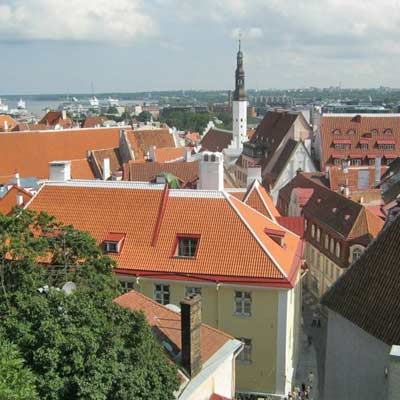
The view over the historic centre of Tallin
48hours in Munich
Sample Munich's famous food, beer, and regal inner city on this two-day itinerary that's packed with amazing palaces and parks. If you're hanging around for longer, then you should also have time to make a beeline for the Alps or explore those off-the-beaten-track neighborhoods, but that will have to wait…
Day 1: Your travels begin on the grand Odeonsplatz. A prime example of the city's 19th-century rebuilding, it hosts some of the most magnificent sights in the region. There's the huge, 130-room Munich Residenz, the onetime home of the Bavarian kings and queens. There's the Theatine Church from the 1600s, sporting its dual Baroque towers.
You only have 48 hours, but the palaces can be visited if you have extra time. Instead, move on through the heart of the city on Briennerstraße to the vast plaza of Königsplatz. This is a photo op extraordinaire, with handsome Neo-Classical monuments like the strange Propyläen. The area around that is the artistic quarter (the Kunstareal), where there are endless museums and galleries to go into if you need to warm up or escape the rain.
Next is the beautiful Frauenkirche. This is a symbol of Munich as a whole; a great church topped by bulbous domes on the central Frauenplatz. It will take around 20 minutes to walk over there, but you'll enjoy moving into the Altstadt area as you go. You should plan to spend the evening within, hopping between sights like the iconic Hofbräuhaus (the best known beer hall in the city) and the ancient Peterskirche (the oldest church in Munich).

The Schloss Nymphenburg and its beautiful grounds
Day 2: No visit to the grand royal capital of Bavaria could possibly be complete without at least a glimpse of the Schloss Nymphenburg. It's hardly central, but private tours can whisk you there and back in a single morning, going through the manicured gardens, the court rooms, and the curious Marstallmuseum with its gold-leafed carriages from the 19th century.
When you return back to the middle of Munich head straight for the English Garden. This is one of Germany's favourite parks. You could start by strolling up the Eisbach to see the surfers riding the river wave. Then explore the pretty Hofgarten, where babbling fountains and bandstands once provided a retreat for Bavarian royals. Alternatively, go straight to the Chinese Tower Beer Garden, to glug traditional German hops brews and taste bratwurst and pretzels until sundown.

The Olympiapark complex, constructed fro the 1972 Olympics
Tallinn Airport is small, but it's served by low-cost carriers coming in from Scandinavia, Russia, and Western Europe. It's only a few miles from the Old Town, and the trip can be done on bus number 2 or with a private taxi – expect to pay in the region of €7-11 for that. Other travellers might come across the Baltic on ferries from Helsinki. They cost about €20 and go several times throughout the day from the port in Finland.
For hotels, the ideal location is the Lower Town. Generally speaking, the closer you get to Town Hall Square, the pricier the establishments become. But you might not even want to be there – it's buzzy and loud. The streets further north and east are laced with other B&Bs and even hostels and are still within walking distance of the monuments. The areas of Tonismagi and Tatari are good alternatives if you're really looking to keep costs low.
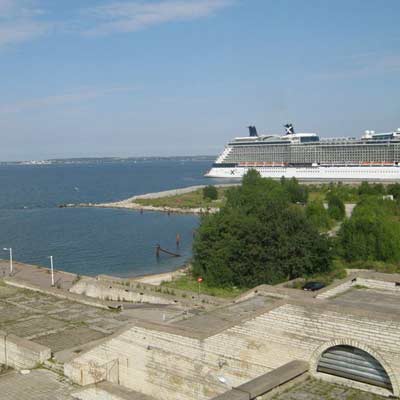
The ferry terminal in Tallinn
Tallinn is a very safe place to travel. It's got low crime rates, and, aside from the ubiquitous pickpockets and taxi scammers, there's rarely any serious issues. Some people have reported extortion scams in nightclubs, but that tends to be limited to the more unsavoury establishments that we think it's best to avoid anyway.
Tallinn is pretty compact and small for a European capital. It's long since burst the seams of its old core, but most of the main sights, bars, pubs, cafés, and museums are still hemmed in by the medieval walls. That means you'll usually be able to walk pretty much anywhere you want. Just be wary of cyclists in the narrow Lower Town streets and icy cobbles in the winter months. Both can be dangers.
Munich International Airport is the second busiest hub in all of Germany. It's a major arrival point, with links coming in on premium and low-cost fliers from right around the globe. Getting to the city from the terminals is easy thanks to the direct S-Bahn line that runs straight to the train station. The trip costs just over €11 and takes around 40 minutes in total.
Long-distance overnight trains and local German trains alike will arrive at Munich Central Station. It's right in the heart of the city, within walking distance of the Altstadt and the Odeonsplatz. If you'd prefer not to walk to the door of your hotel, however, you can enter the S-Bahn or U-Bahn networks from there. Those, along with the comprehensive bus routes and tram lines, can get you virtually anywhere in the town. Basic one-way single tickets cost €2.80 per ride. Buy them at the blue vending machines located in the stations.
Munich is a safe, modern city. The locals are famed for their friendliness and welcoming attitude – a trait of Bavaria, they say. However, it's still important to be wary of scams and dangers, particularly during the Oktoberfest, when alcohol intake increases dramatically.
The best areas to stay in Munich are the Altstadt, the streets around English Garden, and the grand university and gallery area of Maxvorstadt. Cheaper hotels that are still within walking distance of the sights can be found south of the main train station around Bayerstraße.

The Odeonsplatz plaza and the distinctive yellow Theatine Church
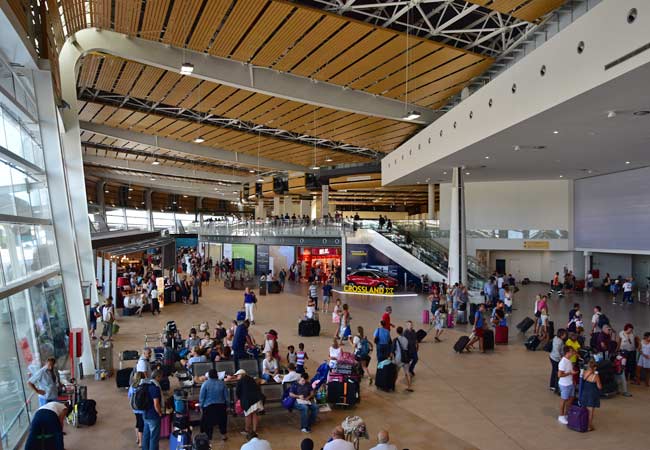
oh we were stuck in the airport!

Copenhagen was a bit expensive...

All we did was drink beer in Brussels...

Muncih was crazy

And we got so burnt!
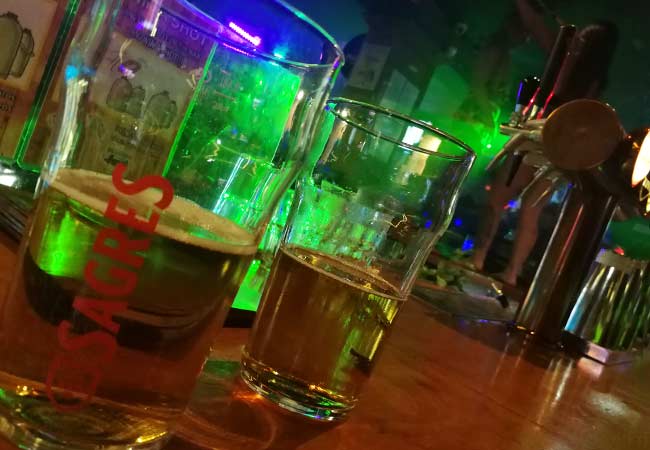
Remeber that night in Rome

oh we were stuck in the airport
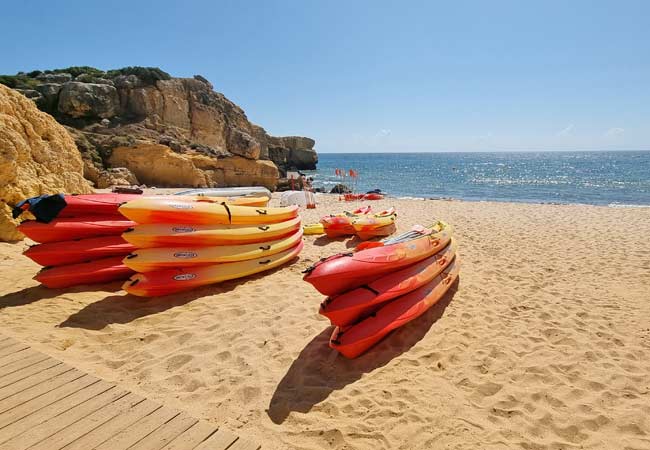
So much fun kayaking

Berlin and that group from Austria!

There was such a view from that church

And we got so burnt!

Munich was eventful, wasn't it!

Such a view from that cathedral in Florence
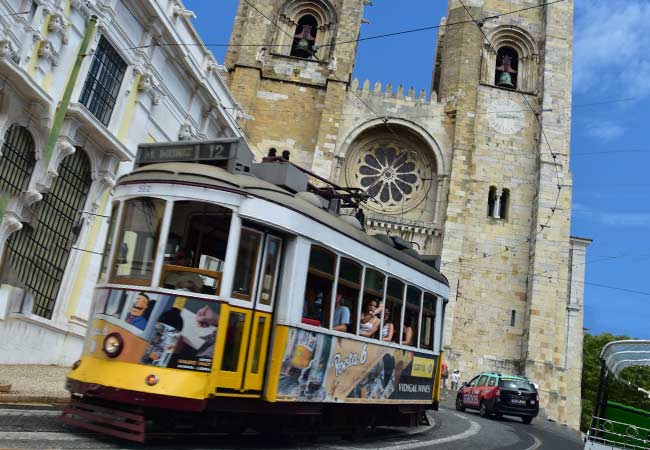
Lisbon was such so much fun

Last summer was so much fun .... x

Remeber that night in Rome

Lisbon was such so much fun

Such a view from that cathedral in Florence

Munich was eventful, wasn't it!

And we got so burnt!

Remeber that night in Rome

All we did was drink beer in Brussels...

Berlin and that group from Austria!

Can't wait to go back to Dubrovnik

Remember that boat ride in Prague

Copenhagen was a bit expensive...
